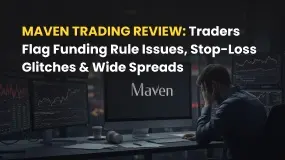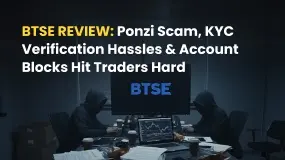简体中文
繁體中文
English
Pусский
日本語
ภาษาไทย
Tiếng Việt
Bahasa Indonesia
Español
हिन्दी
Filippiiniläinen
Français
Deutsch
Português
Türkçe
한국어
العربية
THE VALUE OF ANALYSIS IN THE FOREIGN EXCHANGE MARKET
Abstract:The two primary types of analysis used in the forex market are technical and fundamental. The best sort of analysis to utilize and if traders should mix the two to improve their trading decisions have been hotly contested topics since the invention of trading.

The two primary types of analysis used in the forex market are technical and fundamental. The best sort of analysis to utilize and if traders should mix the two to improve their trading decisions have been hotly contested topics since the invention of trading. The efficacy of both technical and fundamental analysis is questioned by the “efcient-market hypothesis,” which holds that market prices are intrinsically unpredictable. All trading analysts and experts agree that both methods of analysis offer benefits and features that can aid traders, despite the fact that disagreements over the best type of analysis have raged for years. Analysts agree that mastering one or both forms of analysis could require a lifetime of work and application. While candlestick analysis is said to have originated in China in the 18th century using a method developed by Homma Munehisa to estimate demand for basic commodities like rice, technical analysis was first applied by Dutch traders and merchants in the 1700s.
The majority of technical indicators, according to many fundamental experts, are “self-fulfilling and lagging,” which prevents them from working. As a result, they cannot be used. The most widely used indicators, including PSAR (parabolic stop and reverse), Bollinger bands, stochastics, DMI, and MACD, could be called into doubt as to their usefulness and value.
Although many traders who use technical analysis in their trading strategy would definitely assert that employing indicators to enter and exit trades genuinely works, this is not universally true.
Ironically, even on a pretty plain, indicator-free chart, practically all fundamental analyst-traders continue to employ technical analysis techniques. They might choose between candlestick, Heikin-Ashi, line, pin-bar, etc. as their preferred price display method. Alternately, they may employ a pretty simple trading strategy, such as higher lows, lower highs, moving averages, head and shoulders patterns, fractals, pivot points, Fibonacci retracement, and drawing trend lines, among other things. A chart can appear as crowded as one with many of the aforementioned indicators when some of these algorithms are applied to it. Also, aren't decisions about where to set stops and put limit orders also examples of technical analysis?
So, even traders who only use fundamental analysis must employ technical analysis; they merely choose to focus on news, events, and data releases while making or confirming their conclusions. And they'll stay up to date on all releases, possibly using Twitter or spending more money to use something called “a squawk,” in an effort to stay ahead of the market and their trading decisions.
What is Technical Analysis in Forex?
Technical analysis, sometimes known as TA, is the process of predicting future changes in financial price based on an analysis of previous price changes. Using technical analysis, traders may predict how prices are likely to change over time. A wide range of indicators and charts are used in technical analysis to show price changes over a chosen time period. Traders attempt to predict the future direction of the price by examining statistics acquired from trading activities, such as volume and price change.
News is not often given much consideration by technical analysis traders.
They hold the opinion that a chart will eventually expose the detail and possibly the drama of an economic news release. In fact, pricing on a chart can frequently respond before traders have had a chance to read the news or see data presented in order to make a decision. This might be a result of algorithmic/high frequency traders being able to react to news quickly before many other traders can.
What is Fundamental Analysis in Forex?
Fundamental analysts look at an investment's fundamental value; in the case of foreign exchange, this necessitates a careful investigation of the economic factors influencing the value of a country's currency.
The movement of a currency is influenced by numerous important fundamental elements, many of which are included in what are referred to as “economic indicators”.
Economic indicators are statements and information about a nation's economy that are made public by the government or a commercial organization like Markit. Economic reports are the primary tool used to assess a nation's economic health.

Disclaimer:
The views in this article only represent the author's personal views, and do not constitute investment advice on this platform. This platform does not guarantee the accuracy, completeness and timeliness of the information in the article, and will not be liable for any loss caused by the use of or reliance on the information in the article.
Read more

Maven Trading Review: Traders Flag Funding Rule Issues, Stop-Loss Glitches & Wide Spreads
Are you facing funding issues with Maven Trading, a UK-based prop trading firm? Do you find Mavin trading rules concerning stop-loss and other aspects strange and loss-making? Does the funding program access come with higher spreads? Does the trading data offered on the Maven Trading login differ from what’s available on the popular TradingView platform? These are some specific issues concerning traders at Maven Trading. Upset by these untoward financial incidents, some traders shared complaints while sharing the Maven Trading Review. We have shared some of their complaints in this article. Take a look.

BTSE Review: Ponzi Scam, KYC Verification Hassles & Account Blocks Hit Traders Hard
Have you lost your capital with BTSE’s Ponzi scam? Did the forex broker onboard you by promising no KYC verification on both deposits and withdrawals, only to be proven wrong in real time? Have you been facing account blocks by the Virgin Islands-based forex broker? These complaints have become usual with traders at BTSE Exchange. In this BTSE review article, we have shared some of these complaints for you to look at. Read on!

Inzo Broker Review 2025: Is It Legit or a High-Risk Gamble?
When you ask, "Is inzo broker legit?" you want a clear, straight answer before putting your money at risk. The truth about Inzo Broker is complicated. Finding out if it's legitimate means looking carefully at its rules, trading setup, and most importantly, the real experiences of traders who have used it. The broker shows a mixed picture - it has official paperwork from an offshore regulator, but it also has many user warnings about how it operates. This review gives you a fair and fact-based investigation. We will break down all the information we can find, from company records to serious user complaints, so you can make your own clear decision.

INZO Broker No Deposit Bonus: A 2025 Deep Dive into Its Offers and Risks
Traders looking for an "inzo broker no deposit bonus" should understand an important difference. While this term is popular, our research shows that the broker's current promotions focus on a $30 welcome bonus and a 30% deposit bonus, rather than a true no-deposit offer. A no-deposit bonus usually gives trading funds without requiring any capital from the client first. In contrast, welcome and deposit bonuses often have rules tied to funding an account or meeting specific trading amounts before profits can be taken out. This article gives a complete, balanced look at INZO's bonus structure, how it operates, and the major risks shown by real trader experiences. Read on!
WikiFX Broker
Latest News
Is Fyntura a Regulated Broker? A Complete 2025 Broker Review
Zetradex Exposed: Withdrawal Denials, Account Freeze & Bonus Issues Hurt Traders
Is Forex Zone Trading Regulated and Licensed?
PINAKINE Broker India Review 2025: A Complete Guide to Safety and Services
Exness Restricted Countries List 2025 Explained
Is Uniglobe Markets Legit? A 2025 Simple Guide to Its Safety, Services, and User Warnings
Is Inzo Broker Safe or a Scam? An Evidence-Based Analysis for Traders
WikiEXPO Dubai 2025 “Welcome Party” Kicks Off Tonight!
He Trusted a WhatsApp Group and Lost RM659,000
Moomoo Singapore Opens Investor Boutiques to Strengthen Community
Currency Calculator



